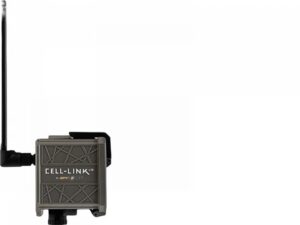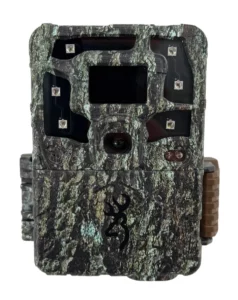Quick links:
Introduction
Key features
Our suggestions
Accessories
Recommended reading
Introduction
Trail cameras are an invaluable piece of technology allowing users to monitor wildlife without disturbing the animal. The trail cameras in our range can take pictures and video during the day and at night using infrared (IR) imaging technology. Likewise, they can endure tough conditions, surviving harsh winds, rain and extreme temperatures making them suitable for almost all situations.
At NHBS we sell a wide range of trail cameras, and while this does give customers plenty of choice, it can sometimes be difficult to decide which camera will best suit your situation and requirements. The information in this guide will help you to make an informed choice.

Key features
No-glow or low-glow?
There are two main types of IR LEDs that trail cameras use to capture images in low-light conditions: no-glow and low-glow. No-glow LEDs produce a very small amount of visible light which is not visible to the human eye, animals will likely see very little of this light; although, this may well depend on the species. Low-glow LEDs do produce a faint glow, and so are not completely invisible and may alert certain animals. One advantage of low-glow cameras is their capacity to illuminate over a longer range.
Trigger speed and recovery time
Trigger speed is the time taken for a trail camera to take a photo once movement  has been detected. Recovery time is how long it takes for a camera to take a photo and be ready to capture another one. A camera with a rapid trigger speed like the Browning Spec Ops Elite HP5 is ideal for capturing images of fast-moving creatures. Likewise, if you are looking to capture multiple images in a short time frame, a trail camera with a speedy recovery time is the best option. Once more, this is perfect for those quick-moving animals.
has been detected. Recovery time is how long it takes for a camera to take a photo and be ready to capture another one. A camera with a rapid trigger speed like the Browning Spec Ops Elite HP5 is ideal for capturing images of fast-moving creatures. Likewise, if you are looking to capture multiple images in a short time frame, a trail camera with a speedy recovery time is the best option. Once more, this is perfect for those quick-moving animals.
Resolution and interpolation
Resolution is a major influence on the quality of your images and videos. It is important to bear in mind, however, that the photograph megapixel ratings offered by manufacturers are often inflated and the result of a process called interpolation. Many trail cameras have the option of adjusting the resolution – increasing it through interpolation or decreasing it through compression. Compression can be useful for saving storage space by reducing the number of pixels. Interpolation digitally adds pixels to an image which eats up storage and generates longer recovery times while doing next to nothing to enhance picture quality. The best way to compare picture quality is to look at sample photographs.

Flash range and motion detection range
If you are planning on monitoring an open area where you expect animals to pass by at a distance, the motion detection range and flash range of a trail camera are worth considering. Motion detection range is the maximum distance a trail camera can register the movement of an animal. The flash range is how far the IR flash will reach. If the flash range is low and an animal is at a distance, you may not see the animal clearly in low-light pictures.
Cellular and solar cameras
Cellular cameras are an excellent choice if you are looking for remote access to your trail camera’s photos and settings without having to regularly interact with your camera in the field. Likewise, the addition of a small solar panel to your trail camera can improve deployment time. This is particularly useful when deploying multiple cameras at the same time or when monitoring inaccessible locations.
 Our range of Spypoint cameras are an excellent choice when considering cellular or solar cameras. The Spypoint CELL-LINK, however, enables cellular functionality for trail cameras from non-Spypoint brands and you can purchase solar panels for Bushnell and Browning cameras.
Our range of Spypoint cameras are an excellent choice when considering cellular or solar cameras. The Spypoint CELL-LINK, however, enables cellular functionality for trail cameras from non-Spypoint brands and you can purchase solar panels for Bushnell and Browning cameras.
Our suggestions
Entry-level cameras
 The Browning Strike Force Pro X 1080 is ideal for those looking for high quality at an affordable price. This low-glow Browning camera boasts a rapid 0.22 second trigger speed, a colour screen, and superb picture quality.
The Browning Strike Force Pro X 1080 is ideal for those looking for high quality at an affordable price. This low-glow Browning camera boasts a rapid 0.22 second trigger speed, a colour screen, and superb picture quality.
Alternatively, if you are looking for an economical no-glow camera, the Browning Dark Ops Pro X 1080 is an excellent choice.
Popular cameras
 The Bushnell CORE DS-4K is an excellent trail camera featuring top-of-the-range picture quality and no-glow IR LEDs, keeping disturbance to a minimum. Additionally, this camera will last for an extended period out in the field due to its long battery life.
The Bushnell CORE DS-4K is an excellent trail camera featuring top-of-the-range picture quality and no-glow IR LEDs, keeping disturbance to a minimum. Additionally, this camera will last for an extended period out in the field due to its long battery life.
Another trail camera with excellent picture quality, the low-glow Browning Recon Force Elite HP5 is an outstanding all-rounder. One benefit of this camera is its longer IR flash range when compared to the Bushnell CORE DS-4K, allowing for improved low-light imagery when the animal is further away.
If you are monitoring a particularly quick species, the Browning Spec Ops Elite HP5’s trigger speed can be adjusted to a lightning-fast 0.1 seconds. This stealthy no-glow camera also features a rapid 0.5 second recovery time and excellent picture quality both during the day and at night, making it one of the top trail cameras in our range.
Accessories
Powering your trail camera
Lithium batteries are essential for operating your trail camera effectively. One of the most common reasons for why a trail camera is not working properly is the use of non-lithium batteries. Most of our trail cameras can be purchased as part of a bundle which includes lithium batteries and a suitable memory card.
Keeping your trail camera safe
 The 180cm long Python Lock is ideal for securing your trail camera to trees and posts and preventing theft.
The 180cm long Python Lock is ideal for securing your trail camera to trees and posts and preventing theft.
Our range of security boxes will provide additional protection against theft and damage. Double check that the security box you are purchasing is compatible with your trail camera model.
Recommended reading
For an in-depth comparison of the trail cameras in our range, check out our trail camera comparison blog.
Take a look at our in-the-field analysis of two of our top trail cameras – the Browning Spec Ops Elite HP5 and the Browning Recon Force Elite HP5.
Explore our complete range of trail cameras on our website or if you have any questions about our range or would like some advice on the right product for you then please contact us via email at customer.services@nhbs.com or phone on 01803 865913.






